Editor's Note
In this story from the Life & Thyme archives, we meet the Los Angeles couple team behind Gelateria Uli in the Spring Arcade building. This month, the couple adds a second location, now open at 8044 W. 3rd Street, Los Angeles, CA 90048.
When I first meet Uli Nasibova and Ryan Vaillancourt, the husband-and-wife team behind Gelateria Uli, it is early on a Saturday morning in Downtown Los Angeles, one that weathermen have promised will climb high into the nineties. This is gelato weather. I wander the historic Spring Arcade building that houses Nasibova’s shop. Vaillancourt greets me with a fresh cup of coffee and recounts some of the structure’s history—its initial opening in 1924, its current home to two residential towers, and the original sign slots for each stall they’ve made a point to use for their own business.
Not every entrepreneur becomes so acquainted with their surroundings, but I quickly learn this is their style. There isn’t a detail about Gelateria Uli the couple hasn’t researched, examined and devoured. This level of engagement with each molecule is how they approach every element. They are active participants in their business and their lives.
It’s befitting of Nasibova and Vaillancourt’s history. The couple met at Colorado College where Nasibova double-majored in French literature and mathematical economics (an indication of Nasibova’s left-brain/right-brain efficiencies, which make her a rare and valuable breed of both innovator and impresario). After Vaillancourt headed to L.A. pursuing a career in journalism, Nasibova followed and stepped into the world of finance, citing its practicality.
Like many small business stories, the provenance of Gelateria Uli begins with seeds of professional dissatisfaction, but the couple also credits a swelling devotion to the community they found in their new home of Downtown Los Angeles.
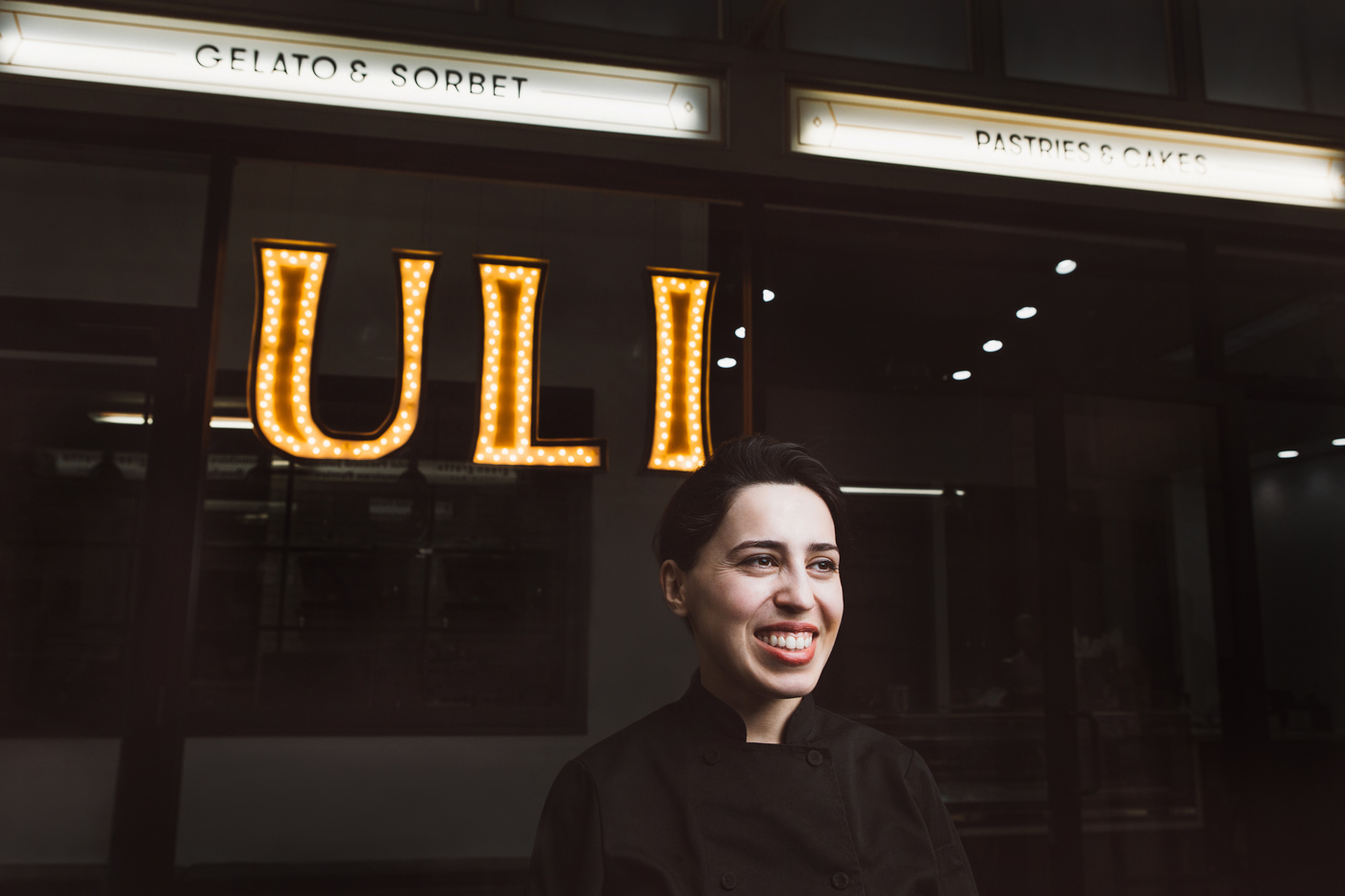

“I was to a point where I was dissatisfied by being so damn agnostic about everything. I had a desire to be more a part of the thing than just a documenter,” Vaillancourt says. “Uli was working in finance because it was a practical thing that she was good at, but she is a creator. She’d come home after commuting, wearing a suit, and it just wasn’t her. It was that dissatisfaction coupled with the thing between us that was giving us the most satisfaction and joy in life, which was being part of this place, and the friends we were making. Nasibova was happy at the end of the day because she was coming home to Downtown.”
“I was riding the bus to Century City,” Nasibova tells me. “Every day when I got on that bus, I was so excited to go back downtown. It just had this energy that was like, it’s happening. There’s something here that’s lively, that’s creative, that’s different than the rest of the city. Between the two of us, we quickly realized that something special was happening here and we wanted to be a part of it. I just needed an idea.”
Nasibova’s heritage—she hails from the post-Soviet state of Azerbaijan—was also influential. “I come from a culture that is extremely hospitable. Whenever someone comes to your house, you share food.” Vaillancourt’s own Rhode Island roots, memories replete with lobster boils for a family of fifty-plus, were congruous. While neither Vaillancourt nor Nasibova has a cNasibovanary background, they feel that it is this inherent love of cooking, consuming, and more importantly, of sharing, that has supplanted the need for formal education.
And while Nasibova spent those days in the rational finance world, she recalls the concept of breaking into the dessert business presenting itself in a much less logical fashion. “One day, we were having dinner with our sister-in-law, and we are having gelato for dessert. You know, a couple glasses of wine, and we look at each other and—I’ll never forget this moment —I say, ‘Imagine if we open a gelato place in downtown LA.’ And we just started laughing because it was just so ridiculous. There’s a point in your life where you’re miserable and you just feel stuck, but in reality you’re not—in reality the possibilities are endless. But we laughed, because it was ridiculous. The following day we woke up, I opened my eyes and the first thing on my mind was gelato. And so I set out to learn how to make gelato.”
“It started out very fast,” she recalls. “I download a business plan template and I order a gelato maker and a couple of books. I knew this was something that was taking over my life, because by week two we decided that this little gelato maker was crap. If I’m going to be running a gelato shop, I need to get the real deal. So we returned it and we buy a commercial gelato maker. That machine was magic; beautiful and precise. We get our kitchen wired with three phase power, and it starts––every free moment is recipe making.”
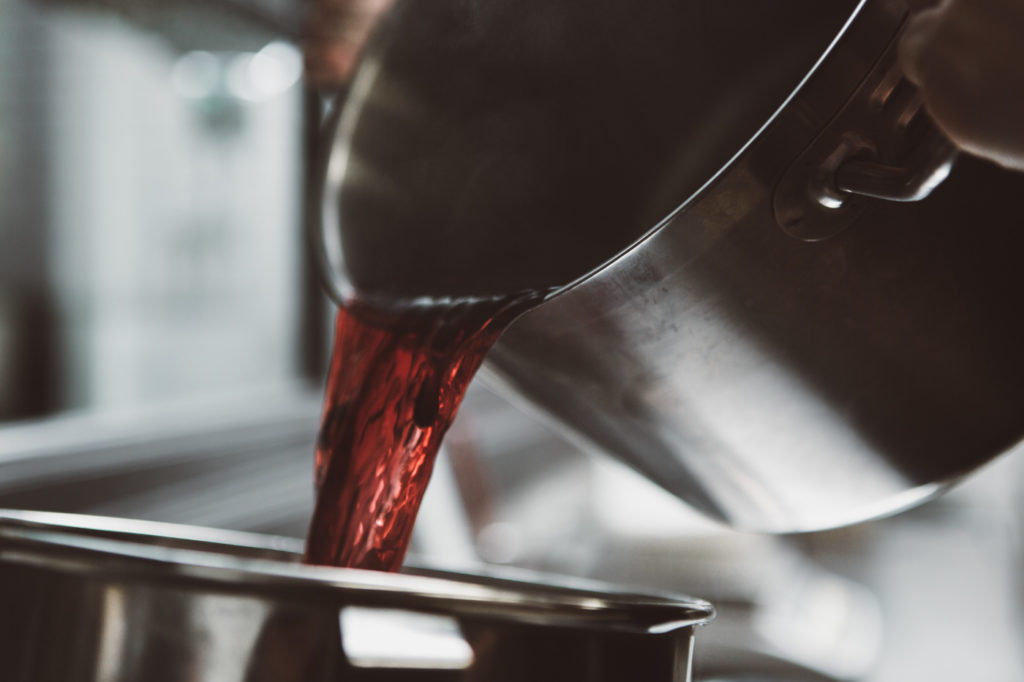

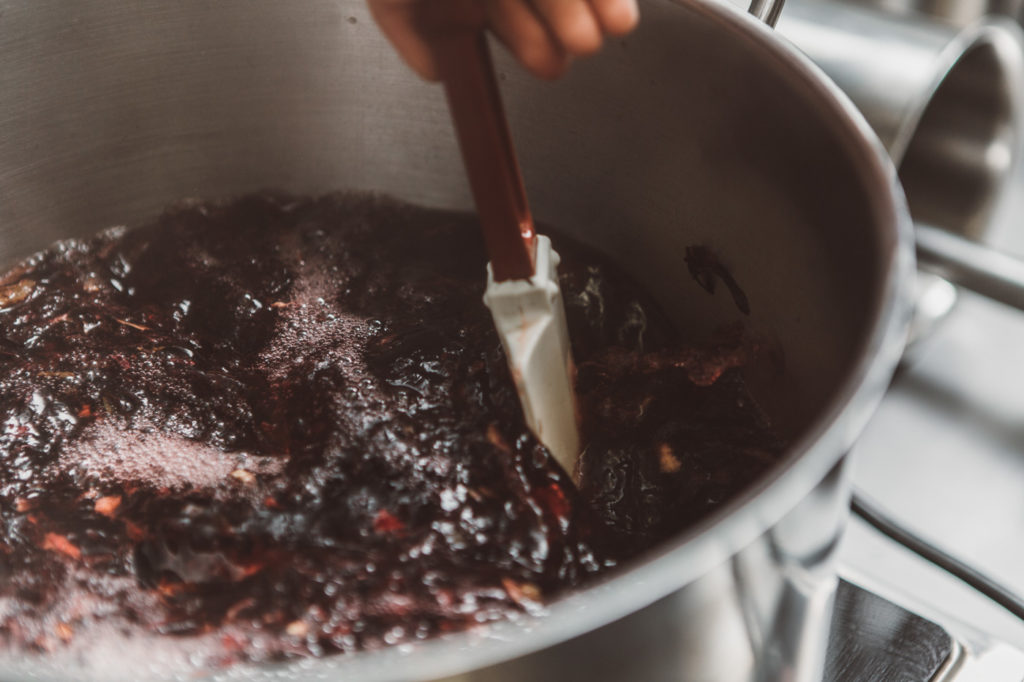

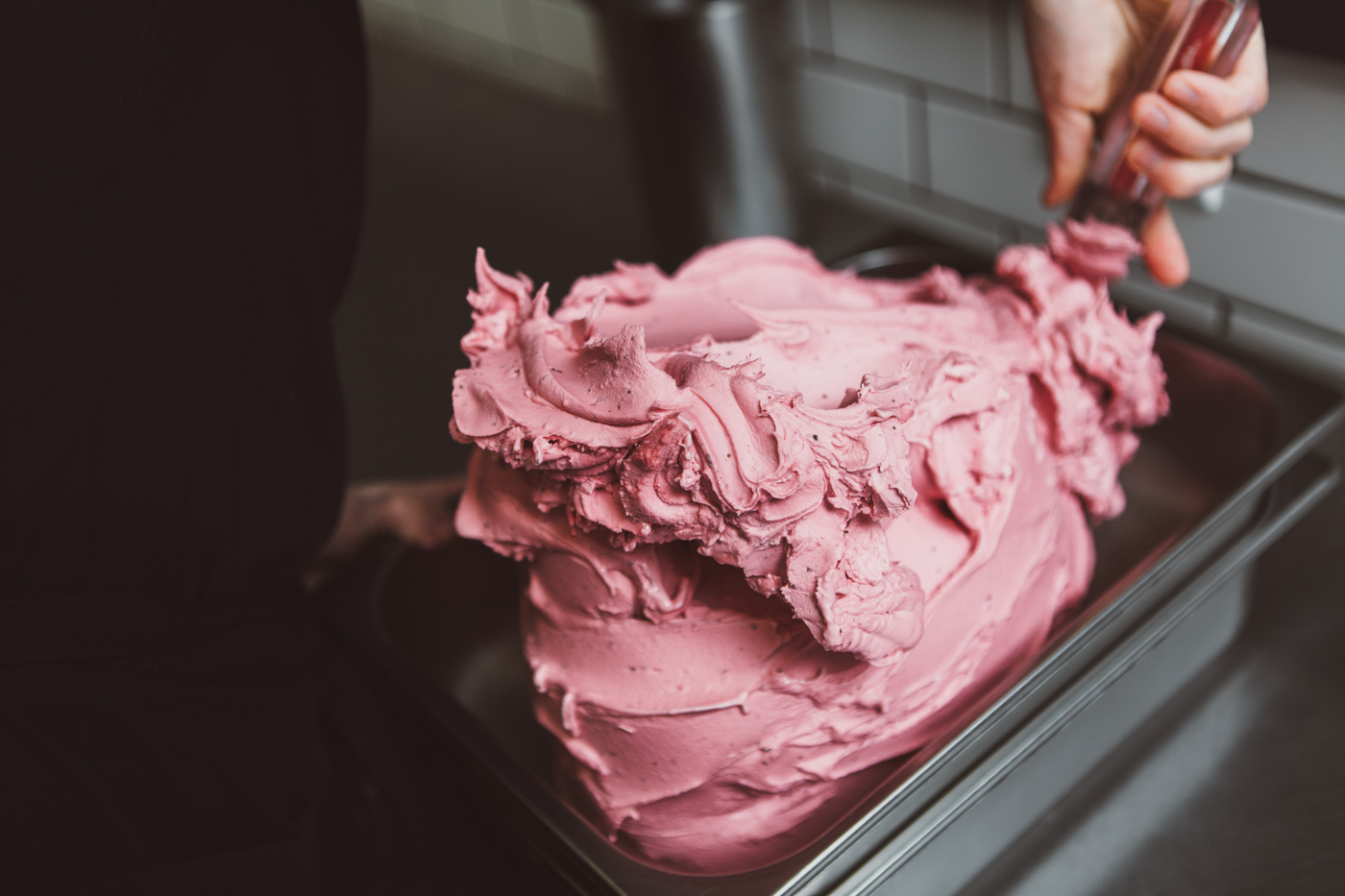
While many American-made gelati originate from pre-mixed bulk powders, Nasibova formulates her own bases. “It could have been a total disaster, but it was like stars aligning. I think it comes from being mathematical; it really helps me balance recipes. I get it. It’s like, ‘Okay, this is how I stay under eight percent butterfat, this is how I make sure the texture is right.’ I read about the physics and it [was] about a year of constant gelato making.”
And their recipe testing had added benefits. “We made a lot of happy friends,” Vaillancourt laughs. “That was the fun part; it continued our tradition of having people over and sharing, but it wasn’t just dinner parties anymore, it was, ‘Come taste gelato and give us your honest opinion.’ We knew these people would be our biggest advocates.”
The resulting flavors range from traditional Italian gelateria staples like stracciatella and Gianduja, to envelope-pushing representations of her creative mind like Beet Tarragon and Sesame Halva. The gelati that I have the opportunity to taste are ethereal, at once delicate and dense, deeply flavored, each with a tempered sweetness that allows what are clearly exceptionally high-quality ingredients to perform.
Nasibova draws on the freshness of those ingredients, sourcing from local farms and primarily California producers. “It’s easy being in California. There are certain things that are sometimes better than in Europe. For example, California olive oil is amazing. We use pistachio paste from a farm in California. For sugar, we use a local processor; it’s a family run company about five miles south of downtown.”
The neighborhood itself continues to present inspiration, too. We’re invited to watch as she creates one of two flavors concepted in collaboration with the shop’s neighbor, LA taco darling Guisado’s, an agua-fresca inspired Hibiscus Mint sorbetto. There’s also a Horchata gelato.
She moves deftly around her bright, organized kitchen, each step deliberate and meticulous. The finished gelato isn’t simply extracted into pans to be later scooped, instead customers are treated to what she calls “Gelato Art.” The process is a sight; Nasibova works swiftly to shape fresh dunes of her pillowy product into a sleek, swirling frozen installation.
When visiting, customers can watch Nasibova work through a large window into the production kitchen, which Vaillancourt points out serves to demonstrate that, “Human beings work here—Nasibova is here every day because she’s making [the gelato].”
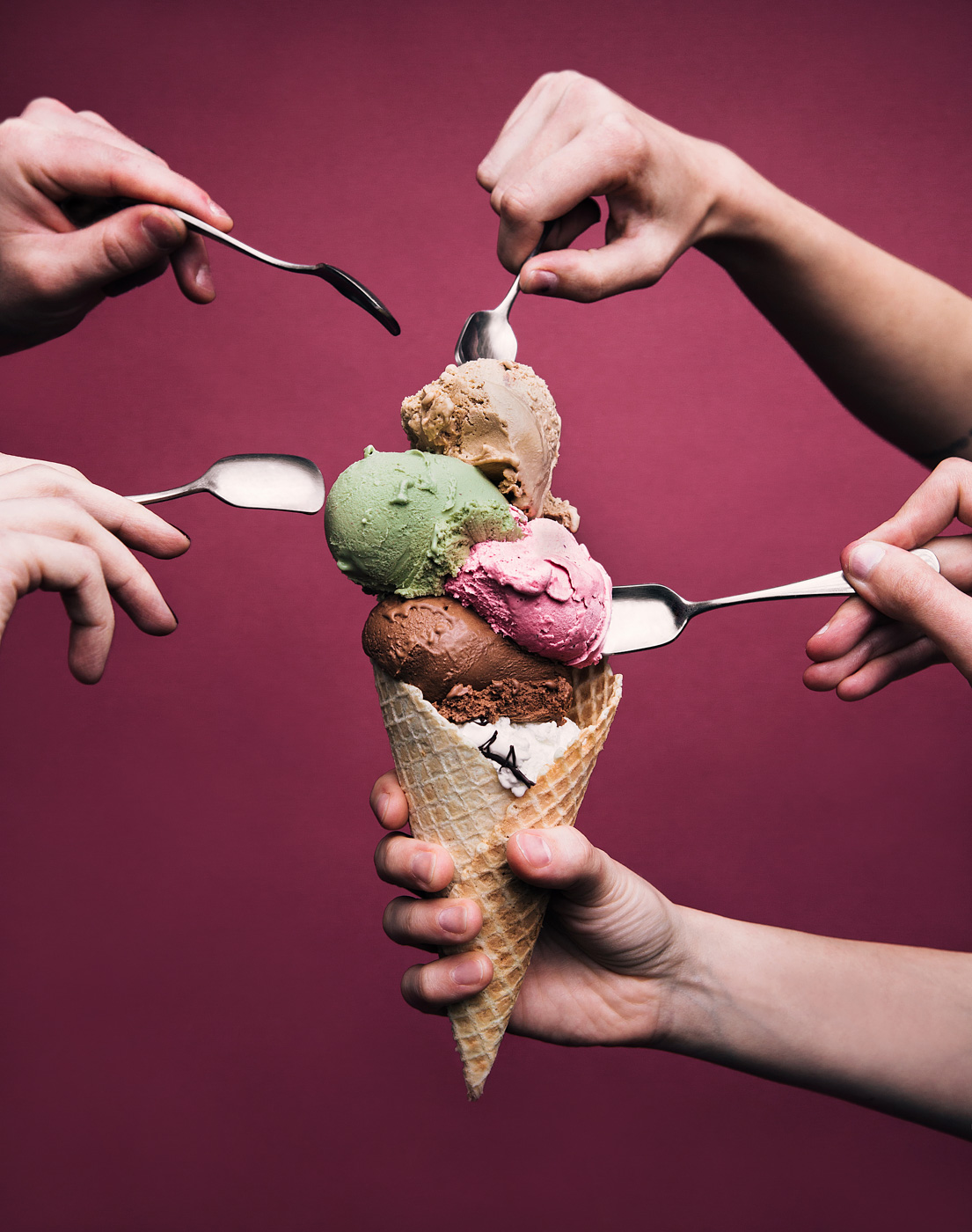
As with the product, the space is a reflection of their neighborhood and themselves. Each component and piece contributes to the personality of the shop. The eye-catching sign—Nasibova’s name in lights—was created by a local electrician-artist couple. The facility itself was designed by Vaillancourt’s father. The sum of these parts comprises the soul of the space.
“What we’re creating here is not just gelato, it’s the experience; the way it’s served, the way it’s presented—it’s a gelateria. If it’s served here, it’s in metal bowls and spoons. We’re recreating the European experience.”
The couple’s relationship itself feels like a character in the story of their business. During conversation, they volley effortlessly, complementing one another. Vaillancourt points out that while he assists, this is very much Nasibova’s endeavor, while Nasibova is quick to recognize Vaillancourt’s contributions, telling me, “I make things good, he makes them great.” She references Vaillancourt’s “genius” flourishes: adding sea salt to the chocolate gelato, or delicate threads of Meyer lemon zest to the olive oil (a subtle touch, but one that lends complexity to the flavor).
Nasibova and Vaillancourt recognize their accomplishments together, but they’re particularly proud of the connection they’ve made with the community that has played such a strong role in inspiring their business. “We have an incredibly loyal community of regulars we’ve gotten to know,” Vaillancourt says. “We’re very proud of the product and really, really believe in the gelato. But beyond that, I think the people in the neighborhood— we hope they feel—that they know we care. We care about giving them a good experience; we are here for the long haul. We decided to do a business in this community.”
Nasibova continues. “In a coffee business, it’s okay to expect regulars. With gelato, we thought, how many times a week can we expect people to eat gelato? The fact that we have this little family, we know them, they know us, they feel connected to the product—that we were able to build a strong group of regulars, that to me feels like an accomplishment.”
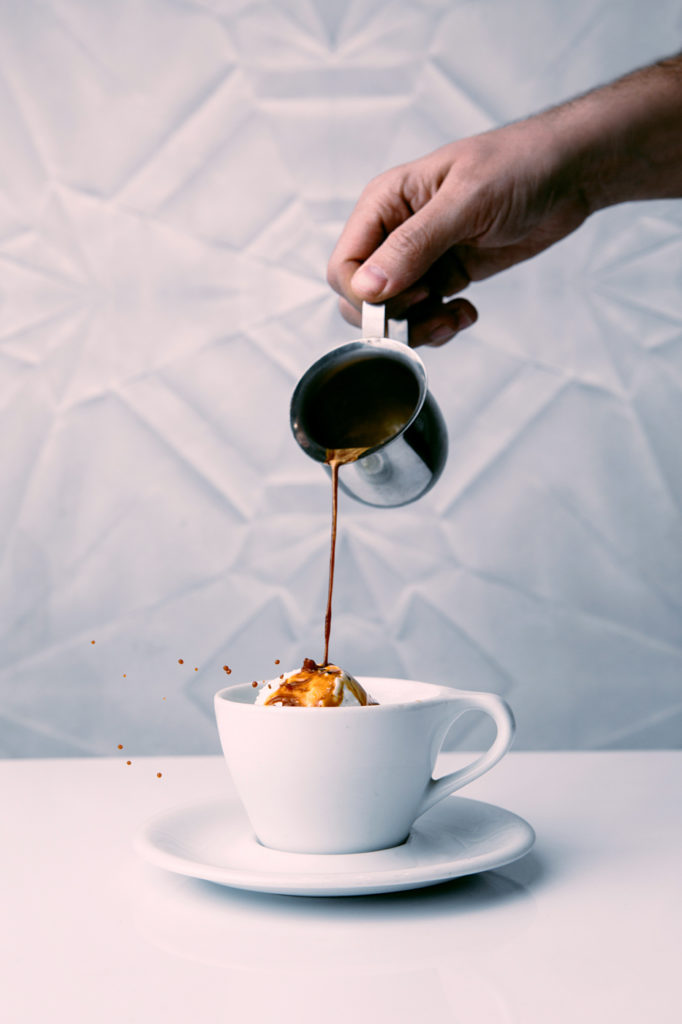
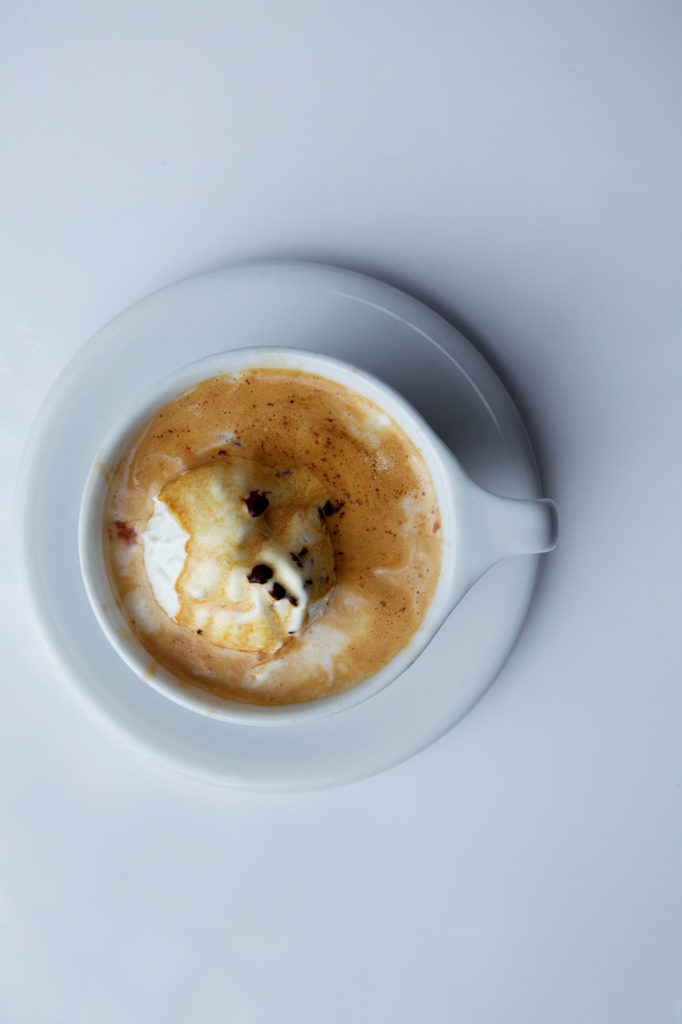

——
Near the end of our time together, as the California heat hits its peak and customers have begun to flood the space, Nasibova requests my attention. “There’s something special I almost forgot to show you.” We turn to face the far wall of her shop, a matrix of open shelving, each section home to several ornate silver vessels, a collection vast and clearly vintage. She tells me about their origins, many from eBay auctions. There are American milkshake cups, soda fountain saucers, dishes of varying shapes and sizes. But she points to a specific set, a pyramid of coupe-shaped bowls with white pedestals; they’re understated, elegant, almost demure. They beg a particular attention, despite the beauty of the entire collection.
She recounts moments in her childhood, Sunday afternoons in which she was served vanilla ice cream out of very similar saucers. She impresses on me how special this treat was in her family, not one they were able to have often. She recalls how much she loved the ice cream, but also how important those moments with her family were in her formative years. As she speaks, I notice a group of customers occupying a table at Gelateria Uli. They’re passing spoons between them, sampling one another’s selections. It’s easy to imagine this may be a moment about which they someday tell a similar story.
I watch as Nasibova squints, summoning the memory, sharing something close to her heart. This is not unlike the feeling you get when you taste each one of Nasibova’s meticulously crafted gelati; that you are being let in on a little something, that she’s sharing a piece of herself and her own life with you. You are humbled by the experience and grateful that she’s chosen to extend this offer to you. And, if you’re anything like me, you’re thrilled at the sheer, sweet joy that every scoop presents.





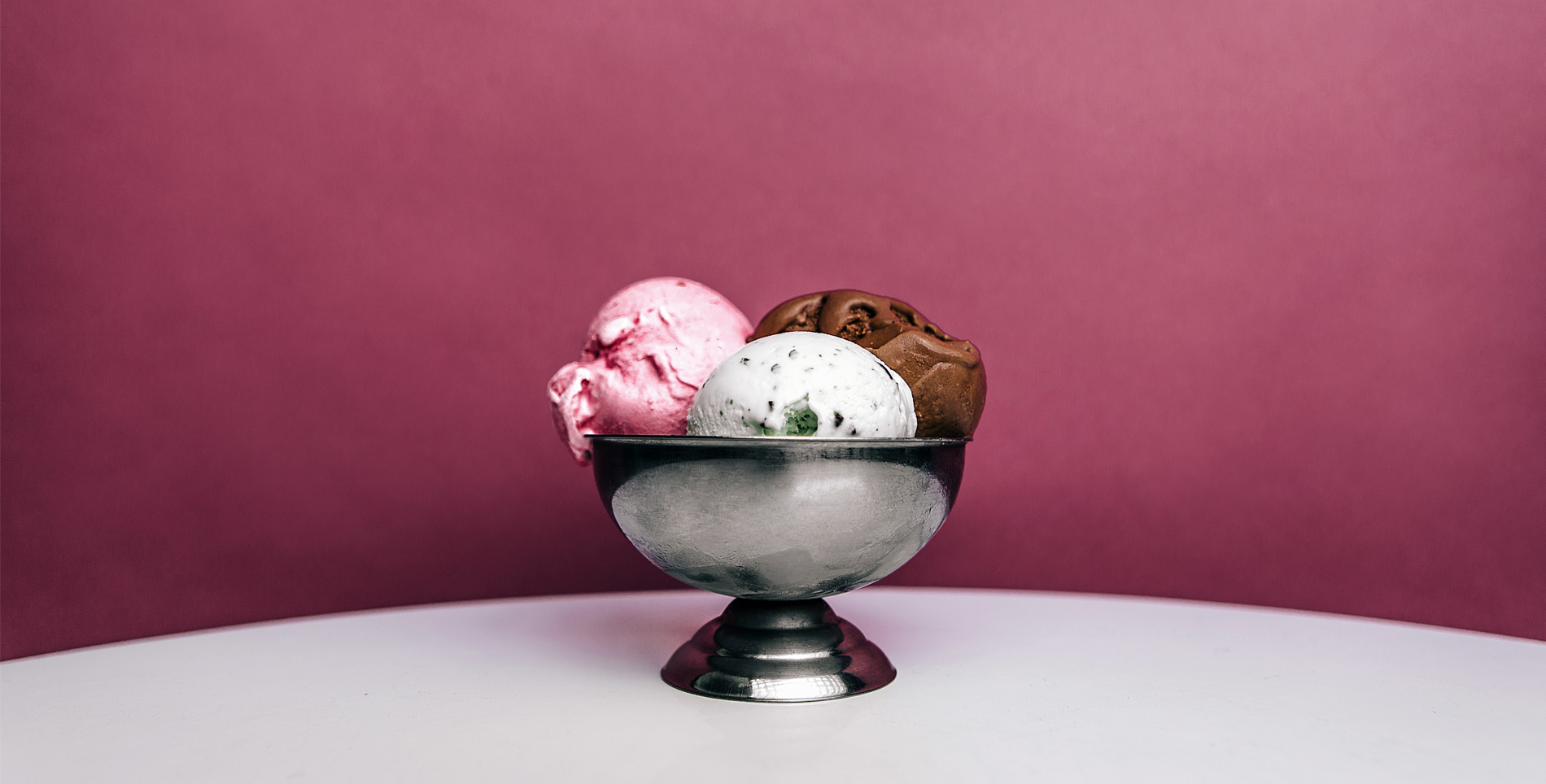

Our comments section is for members only.
Join today to gain exclusive access.